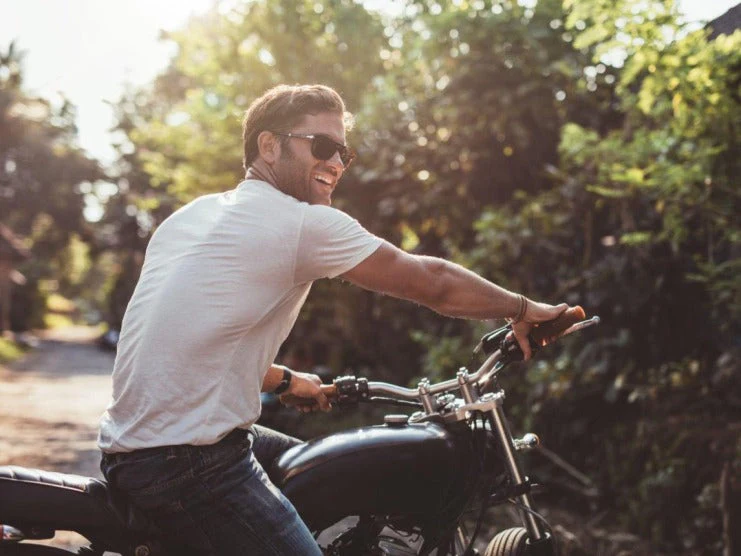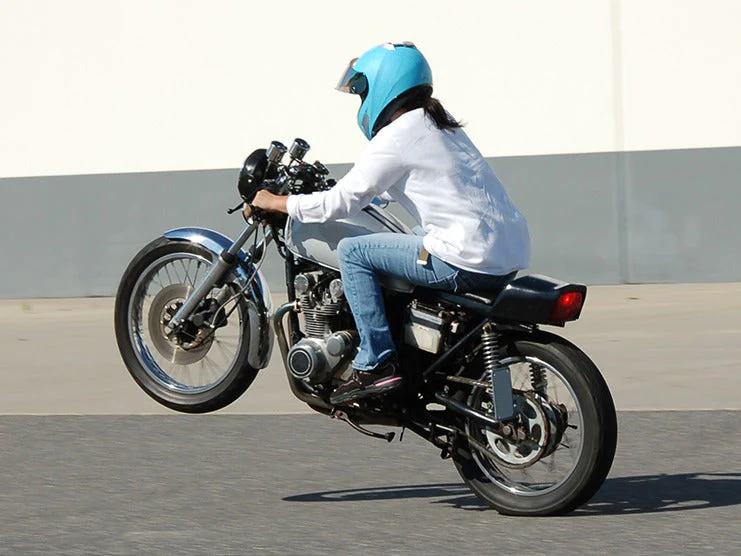Motorcycle riding is a fun experience, especially when it comes to adventure riding. Adventure riding is an excellent way to explore the outdoors and travel to new destinations. It can also be an excellent way to test your skills and push your limits. Adventure riding requires preparation and planning to ensure a safe and enjoyable experience.
This article discusses the steps you must take to get ready for a motorcycle adventure ride.
Table of Content

1. Plan Your Route
Before embarking on an adventure ride, you must plan your route carefully. This involves deciding where you want to go, how much distance you want to cover, and how much time you want to spend on the road. You can use online maps or apps to plan your route and consult travel guides or other riders who have gone on similar trips before.
When planning your route, research the terrain of the roads you will be traveling on, the weather forecast, and the available gas stations, restaurants, and hotels along the way. Also plan for emergencies, such as breakdowns, accidents, or unexpected changes in the weather.
2. Choose the Right Adventure Motorcycle
Motorcycle adventure riding involves taking your motorcycle offroading to explore new locations. It is important to choose the right motorcycle for an enjoyable riding experience. Choose a motorcycle that is easy to maneuver and capable of carrying enough luggage. Moreover, your motorcycle should have a smooth engine, a comfortable seat, and good wind protection.
3. Check Your Motorcycle
It is essential to keep your motorcycle in working condition in anticipation of the ride ahead. Before going on a trip, make sure to check the following:
- Tires: Check the tire pressure, tread depth, and overall condition of the tires. Make sure they are inflated to the recommended pressure and have enough tread depth to provide adequate traction on different terrain.
- Brakes: Check the brake pads, brake fluid, and brake lines. Ensure that your brakes are in working order and provide sufficient stopping power.
- Engine: Check the oil level, coolant level, and air filter to ensure the engine runs smoothly and does not overheat.
- Lights: Check all the lights, including the headlights, brake lights, and turn signals. Make sure they are working correctly and are visible to other motorists.
4. Motorcycle Maintenance and Modifications
On an adventure ride, a motorcycle engine has to work harder due to carrying more weight. It is recommended you perform a pre-ride maintenance check and add a few modifications.
4.1 Maintenance
Before an adventure ride, inspect the following motorcycle parts:
Motorcycle Fluids
- Brake Fluid
- Suspension Fluid
- Radiator Fluid
- Clutch Fluid
Other Parts
- Chain and Sprockets
- Brake Pads
- Electrical Connections and Components
- Wheels
- Bolts
- Pivot Points
- Clutch and Brake Levers
- Gears
4.2 Modifications
Some motorcycle parts need to be modified to ensure a stress-free trip.
Handlebars
The handlebars should be in a comfortable position that ensures you have an upright posture. For optimal control, the handlebars and the forks should be aligned and positioned near the center of the upper fork leg.
You may also need handlebar risers to ensure the handlebars are at the right height. Measure from the ends of the handlebars to the footpegs; if the length is less than half your height, you may need handlebar risers.
Suspension
You must reduce tension in the suspension springs before an adventure ride to better absorb the shock of impacts. It is easy to apply maintenance and modify suspensions at home.
Tires
Do not use standard street tires since they will quickly become covered in dirt and lose traction. For adventure riding, you will need to purchase more aggressive motorcycle tires. These tires are designed with treads that provide better traction on mud.
Consider lowering the tire pressure by 5-10 psi whenever you transition from asphalt roads to dirt trails to maintain stability and traction. But before making modifications, verify with a manufacturer first.
For mud and sand, most tires can have a pressure as low as 15 psi to improve handling and safety.
Air Filters
The air filter must be able to keep dust, dirt, and other contaminants from entering the engine. Carry an extra air filter with you if you plan to ride on dusty and rough terrain.
5. Adventure Riding Gear
Adventure riding gear will protect you from suffering injuries due to harsh weather, collision, and falls.
Examples of riding gear required for an adventure ride include the following:
5.1 Helmet
A high-quality helmet protects your head from suffering blunt trauma if you are thrown off your motorcycle. Make sure your helmet meets safety standards and is comfortable when worn for extended periods.
5.2 Jacket and Pants
Make sure to wear a jacket and pants made of good-quality materials that are durable and comfortable.
They protect your body from getting scratched, keep you warm, cool, and dry, and can carry your belongings.
5.3 Gloves
Riding gloves can keep your hands comfortable and protect them from getting scratched due to their soft yet durable materials.
Certain riding gloves are waterproof, insulated, or vented, making them suited for specific weather conditions.
5.4. Boots
Wear boots that are waterproof, comfortable, and protect your shins and ankles. They should also have soles that provide adequate grip suited for hiking on trails and standing on footpegs.
6. What to Pack for an Adventure Ride
6.1 Camping Gear
If you plan to camp in the wilderness, pack appropriate camping gear, including a tent, sleeping bag, and portable stove.
6.2 Clothing
How much clothing you bring will depend on how long your trip will be. Pack light clothing that is best suited for the weather and environments at the destination. It’s best to wear woolen and synthetic clothes since they are water-resistant and dry quickly.
If you are heading to a warmer area, take fewer clothes (one or two pairs of pants and shirts) and wash them regularly. If you’re going to a colder area, take a heated leather jacket and pants.
6.3 Motorcycle Repair Tools
Pack a basic tool kit to help you fix minor mechanical problems that may occur on the road. Your tool kit should include a tire repair kit, pliers, screwdrivers, and a wrench set.
6.4 Electronics
Electronics you will need are a cell phone, charger, translator, and camera. Try to only take light electronics that take up minimal space.
6.5 Food
Pack enough food to keep you energized throughout your ride. Consider carrying energy bars, fruit, nuts, and other non-perishable snacks that are easy to eat on the go.
6.6 Cooking Equipment
Make sure to purchase high-quality cooking equipment, such as pots and pans, that are lightweight and rustproof.
6.7 First Aid Kit
Pack a first aid kit with bandages, antiseptic cream, painkillers, etc.
6.8 Communication Device
Pack a communication device, whether a mobile phone, GPS tracker, or two-way radio. Make sure your device has enough battery life left and a way to recharge it if needed.
6.9 Maps and Guidebooks
Pack maps and guidebooks of areas you will be traveling through. These resources can help you navigate, find interesting places to visit, and teach you about local history and culture.
6.10 Personal Items
If you still have room on your motorcycle, pack toiletries, luxuries, and any medications or supplements for your health.
7. Practice Your Riding Skills
Adventure riding can be challenging, especially if riding on uneven terrain or in adverse weather conditions. It is essential to practice your riding skills before going for an adventure ride to better prepare you for any potential challenges ahead.
Practice riding on different terrains, such as gravel, dirt, and sand. Learn how to control your motorcycle in different weather conditions, such as rain, wind, and fog. Also take the opportunity to practice emergency maneuvers, such as braking, swerving, and cornering.
It may help to take an advanced riding course to improve your current skills and learn new riding tips that may help you rider safer.
8. Modify Your Riding Style
Adventure tours often require off-roading, which requires different skills than riding on paved roads. In anticipation for off-road travel, you must be able to modify your riding style.
8.1 Throttle and Clutch Control
When riding slowly on off-road terrain, you must have good coordination when operating the throttle and clutch. Many adventure riders hold the clutch with two fingers at all times when riding.
8.2 Body Positioning
You’ll need to adjust your body position depending on the terrain. For instance, when traveling over hills or loose gravel, you can better maintain balance by standing on the footpegs. You’ll need to shift your weight backward when traveling downhill or over sand and puddles.
9. Stay Hydrated and Well-Rested
Adventure riding can be physically and mentally exhausting, especially if you ride in extreme weather conditions for long hours. Staying hydrated and well-rested will ensure you’re focused, alert, and energized throughout your ride.
Drink plenty of water and other fluids to prevent dehydration, especially in hot weather. Take regular breaks to stretch, rest, and refuel your body. Avoid alcohol and other substances that can impair your judgment and reaction time.
10. Stay Alert
You must stay alert and be aware of your surroundings to anticipate and respond to any potential dangers. Always keep a safe distance from other vehicles in case the ones ahead suddenly brake. Keep an eye out for wildlife, pedestrians, potholes, or debris on the road.
Always ride under or at the speed limit, especially on uneven terrain. Avoid distractions, such as using your phone or listening to music, that will divert your attention away from the road.
11. Last Words
Motorcycle adventure rides require preparation and practice. By following the tips discussed in this article, you can ensure your adventure ride is enjoyable and safe. Remember to plan your route, maintain and modify your motorcycle, wear appropriate riding gear, pack essentials, adjust your riding style, and improve your riding skills.
To make adventure rides more comfortable, consider adding good-quality luggage bags from Viking Bags, such as ADV Touring saddlebags, ADV Touring tank bags, ADV Touring tail bags, ADV Touring backpacks, and ADV Touring roll bags.













Leave a comment
All comments are moderated before being published.
This site is protected by hCaptcha and the hCaptcha Privacy Policy and Terms of Service apply.